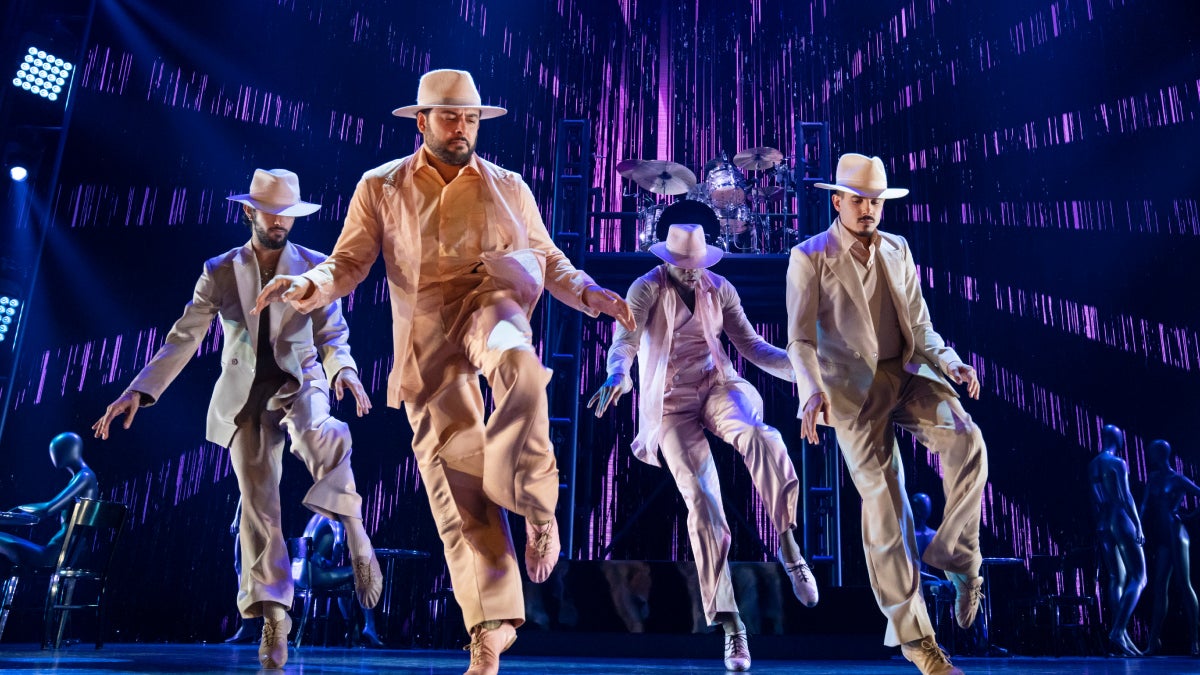
Memory doesn’t serve me well in reviewing “Bob Fosse’s Dancin’,” which opened Sunday at the Music Box on Broadway. I saw the original show, simply titled “Dancin’,” and remember very little about it. Oddly enough, I do remember the date I saw the show, because it was the first preview (March 28, 1978), and some people at the Shubert Organization had decided to give the Broadhurst Theatre a little makeover. They painted the seats in the orchestra, and it hadn’t yet dried sufficiently, much to the distress of some theatergoers whose clothes were given an added dash of color. I also remember one dance move (“move” is a strange word with regard to Fosse, since it can mean “not moving your feet”) that forced one nimble dancer to arch backward, his hands and feet on the floor, as another dancer’s foot came up through his crotch to simulate an erection. I also distinctly remember not liking “Dancin’” much.
It’s nice to report that the penis-foot does not make a return visit in “Bob Fosse’s Dancin’,” and that I enjoyed the show more now than I did in the 1978 when I considered myself an aspiring dancer-writer. Back then, I took a lot of dance classes at the local Alvin Ailey and Martha Graham schools, and while I wasn’t reviewing theater, I did consider myself an expert on choreography. Now I review theater and have forgotten much of what I once knew about dance.
Watching “Bob Fosse’s Dancin’,” I kept thinking about a quote attributed to Gwen Verdon, who said that Fosse’s choreography was like putting a car in neutral and then flooring it. His choreography is so contained and controlled and yet requires so much effort and discipline to execute. The problem is, when you put a dancer in neutral and floor it, no one goes very far. That’s fine for a short dance number in the middle of a musical; it’s another thing for an evening that lasts slightly over two hours.
TV advertisements for this particular show are calling Fosse, in so many words, Broadway’s greatest choreographer. As for the best, I’d put my money on either George Balanchine or Jerome Robbins, who went on to create full-length ballets after their Broadway stints. “Dancin’” was never a full-length ballet or dance piece; it continues to be a series of skits, some much better than others. Fosse’s choreography is immediately identifiable: the pre-moonwalk shuffle, the slow slide from knee to knee to knee, the swiveling hands and and grinding hips, the deep lunge against a chair, the arms thrown back like an injured exotic bird that tries but can no longer fly. When his choreography really moves to take his dancers’ feet off the stage floor, Fosse resorts to a standard ballet vocabulary: a series of grand jetes here, a tour en l’air there.
Or, do those balletic flourishes belong to Wayne Cilento, who is credited here with direction and musical staging? Cilento appeared in the original company of “Dancin’,” and there are wags on Shubert Alley, who say the show should be renamed “Wayne Cilento’s Dancin’.” One thing is very schizoid regardless: the dancers’ hands. When the dancers perform Fosse’s signature moves, their hands are all “Pippin,” but as soon as they do something little a simple pirouette, which don’t always land well, their hands suddenly go all Petipa on us.
At its best, which is very dazzling, Fosse’s choreography services a narrative, like the lost-among-the-skyscrapers story of “Big City Mime,” led by the incredibly lithe Peter John Chursin; or his choreography services a unique character, like the one presented by Kolton Krouse in “Benny’s Number.” While embodying the most gender-fluid person ever to be seen on the Broadway stage, Krouse also gives us an idea of what Marilyn Monroe at her most zaftig (“Some Like It Hot”?) would have achieved if she could really, really dance. Fosse, for all his sexual derring-do on stage, never delivered anything like Krouse. Sometimes it’s great not to fit into the chorus.
Reid Bartelme and Harriet Jung’s costumes for Krouse and everybody else are equally phenomenal. These two designers know precisely where to put all the peek-a-boo holes in the clothes and not obstruct our view with yards of sheer mesh fabric. Finn Ross’s colorful and geometric video designs, projected between the massive scaffolds of Robert Brill’s set, also deliver an endless sense of movement. That’s particularly needed for the show’s weak second act when, among other stagnant numbers, the dancers launch into the desultory “America” segment, which treats us to send-ups of patriotic standards by George M. Cohen and John Philip Sousa. There’s a smug irony to this presentation of Americana that’s especially unwarranted.
I don’t recall how Fosse ended his “Dancin’.” Cilento ends his with a real flourish. He gives each of his nearly two dozen dancers the full-star treatment, complete with his, her or their name emblazoned (lighting by David Grill) in tall letters on the upstage wall. Cilento, who appeared in the original company of “A Chorus Line,” presents the anti-“Chorus Line” with this extended curtain call. These quick solo turns feature some of the evening’s best choreography. Here and elsewhere in the show, Dylis Croman, Jovan Dansberry, Pedro Garza, Jacob Guzman, Mattie Love, Nando Morland and Ron Todorowski grab our attention to mesmerize. Now, that’s entertainment.
| ReplyForward |
Robert Hofler, TheWrap’s lead theater critic, has worked as an editor at Life, Us Weekly and Variety. His books include “The Man Who Invented Rock Hudson,” “Party Animals,” and “Sexplosion: From Andy Warhol to A Clockwork Orange, How a Generation of Pop Rebels Broke All the Taboos.” His latest book, “Money, Murder, and Dominick Dunne,” is now in paperback.














